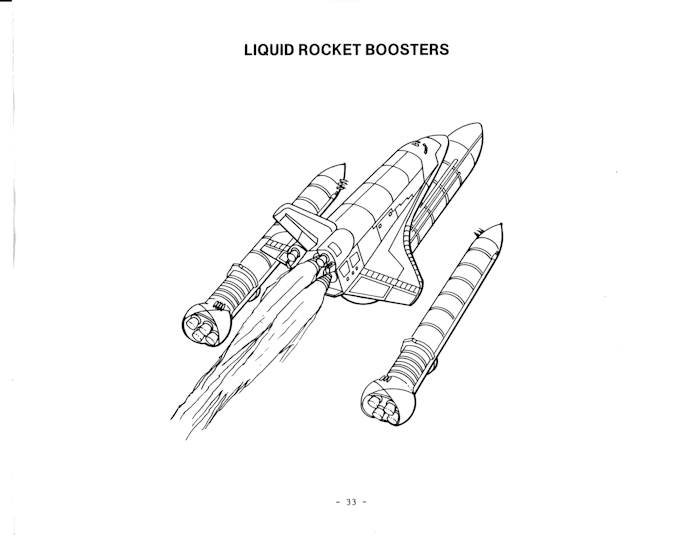Continuing…
As part of Rockwells 1985 ponderings of what they could do to dredge up more business, the notion of liquid propellant rocket boosters (LRBs) were floated. The idea of LRB’s has been a part of the Shuttle program since the beginning, and ran not only until the end of the program but beyond it: the Shuttle derived SLS vehicle uses derivatives of the Shuttle solid rocket boosters, and there are those who would like to see them replaced with LRBs.
LRBs would theoretically provide improved performance due to the higher specific impulse that liquid propellants offer. Their recovery, refurbishment and reuse would also theoretically be improved; as SpaceX has shown, the refurbishment of a recovered liquid rocket booster is a far simpler operation than the refurbishment of a solid rocket booster. From Rockwell’s point of view, the LRB had one great advantage over SRBs: Rockwell was not the prime contractor for the SRB. They could be for the LRB.
Note that the illustration below seems to show existing SRB casings repurposed into LRBs. This would of course not happen. The LRBs would be relatively smooth and featureless, without the raised field joints used to bolt the several segments of the casing together (this is likely an existing pen&ink sketch of the standard STS with some changes to the business ends of the boosters). However, the use of four engines per booster and the addition of clamshell waterproof closures to keep the engines dry after splashdown was a common feature of such designs. The use of a wide range of liquid fuels was studied… hydrogen, propane, methane and kerosene being the most commonly studied. Hydrogen was probably the usual favorite due to the high performance and the fact that the launch facilities were already plumbed for hydrogen. But a hydrogen fueled LRB would be very fat compared to the standard SRB; this would put the outboard engines well outside the exhaust pass-thoughts in the launch platform, meaning substantial launch facility modification would be required.
Next up: hammerhead ETs

